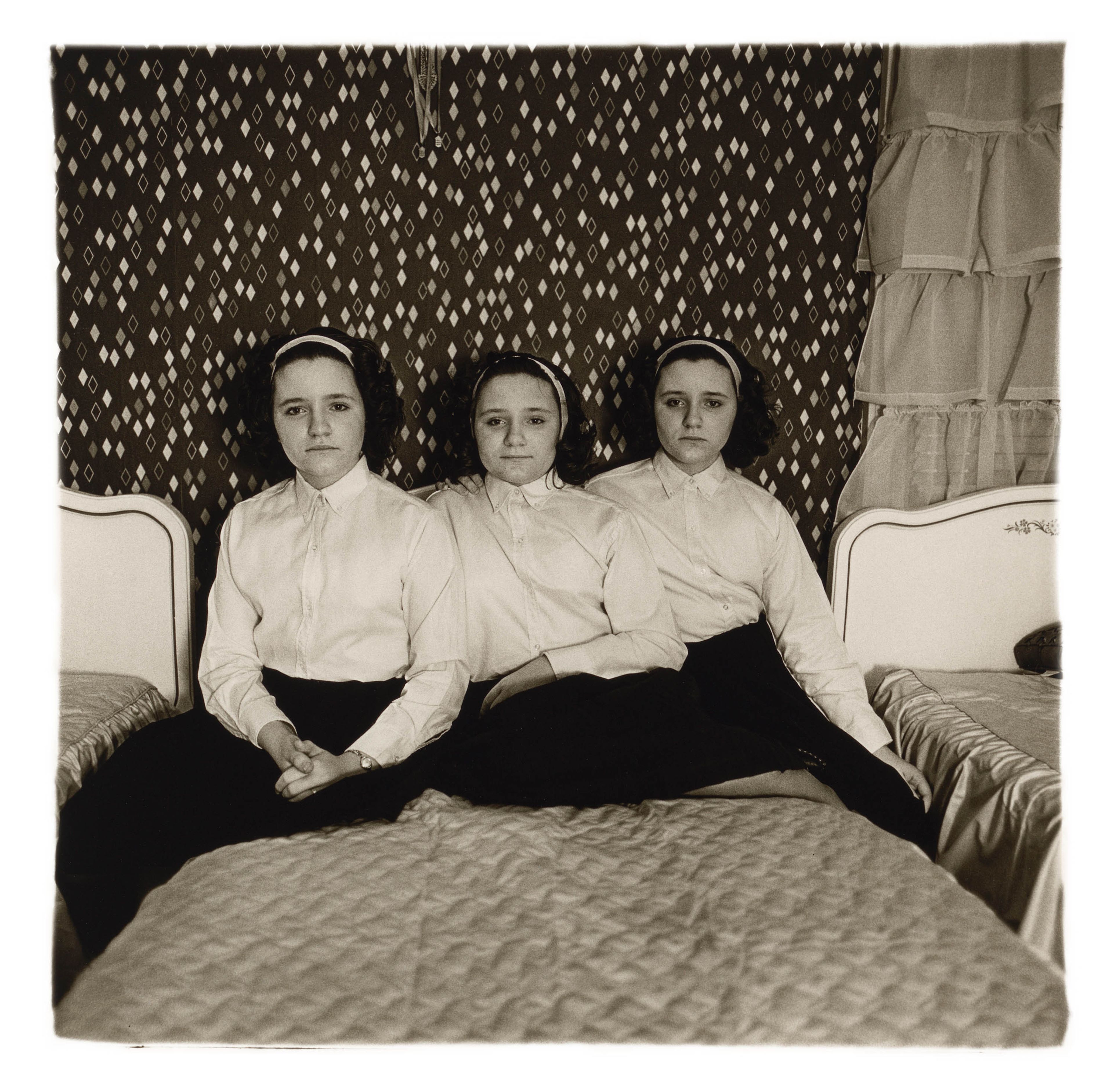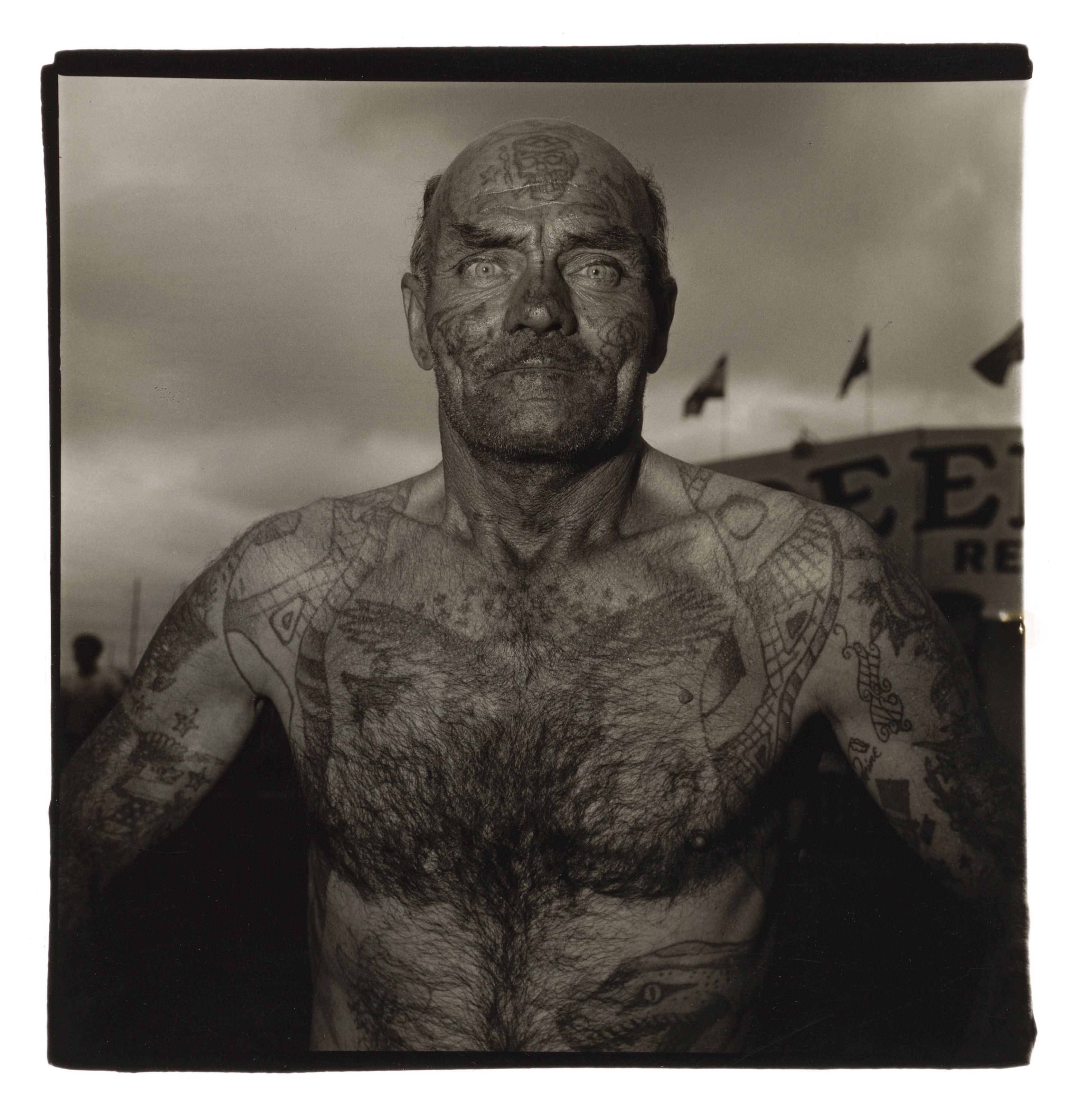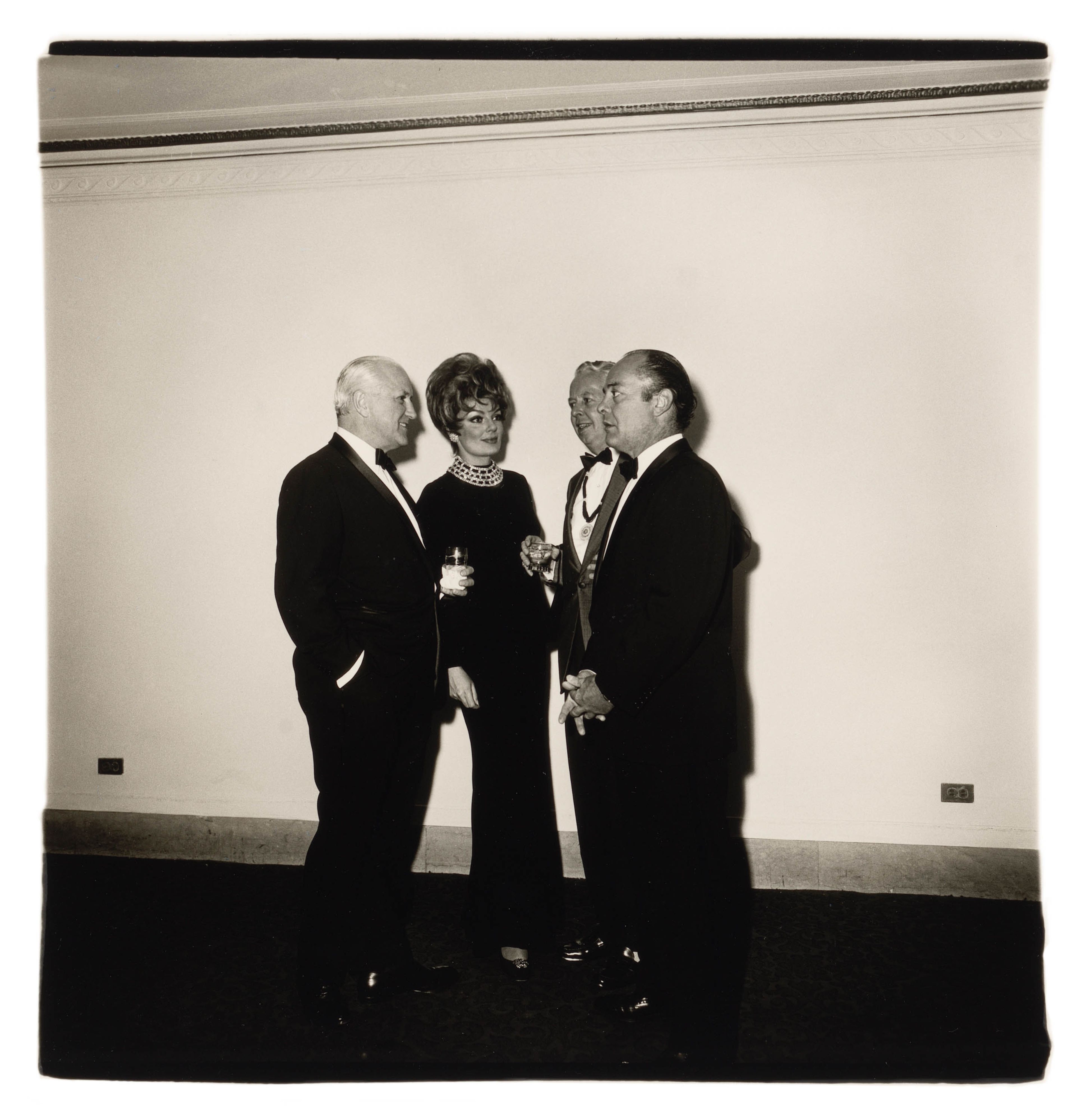.cataclysm. The 1972 Diane Arbus Retrospective Revisited
Past
April 24—June 21, 2025
Opening Reception
Thursday, April 24, 6–8 PM
Opening Reception
Thursday, April 24, 6–8 PM
Location
Los Angeles
606 N Western Avenue
Los Angeles, CA 90004
Tue, Wed, Thu, Fri, Sat: 10 AM-6 PM
Artist
Explore

Diane Arbus, Self-portrait with 35mm Contax D camera, 1959. Contact sheet, roll 614 #34 © The Estate of Diane Arbus. Image courtesy Diane Arbus Archive, The Metropolitan Museum of Art, New York.
“A thing is not seen because it is visible, but conversely, visible because it is seen...”
—Passage underlined by Diane Arbus in her copy of The Works of Plato

Installation view, .cataclysm. The 1972 Diane Arbus Retrospective Revisited, David Zwirner, Los Angeles, 2025

Installation view, Diane Arbus, Museum of Modern Art, New York, 1972
Organized to commemorate the fiftieth anniversary of the artist’s 1972 retrospective at The Museum of Modern Art, this presentation brings together the iconic exhibition’s checklist of 113 photographs so that everyone can see what all the fuss was about.

Installation view, Diane Arbus, Museum of Modern Art, New York, 1972
The title of the exhibition at David Zwirner—Cataclysm—alludes to the immensity of the uproar spawned by the retrospective and the ferocity of the critical discourse around the artist that emerged then and continues to the present day.

Collaged archival materials featured in Diane Arbus: Documents, co-published by David Zwirner Books and Fraenkel Gallery, 2022

Installation view, .cataclysm. The 1972 Diane Arbus Retrospective Revisited, David Zwirner, Los Angeles, 2025

Collaged archival materials featured in Diane Arbus: Documents, co-published by David Zwirner Books and Fraenkel Gallery, 2022. Order Now.

Boy with a straw hat waiting to march in a pro-war parade by Diane Arbus, cover of Artforum, May 1971
Despite minimal sales at the time, the portfolio immediately triggered two highly consequential and precedent-breaking events. In May 1971, Artforum, which had never before permitted photographs in its pages, did a cover feature on the images in A box of ten photographs.

Installation view, Diane Arbus: A box of ten photographs, American Pavilion, Venice Biennale, 1972
And at the 1972 Venice Biennale, showing photographs for the first time in its history, Arbus’s ten images at the American pavilion proved to be a sensation.

Collaged archival materials featured in Diane Arbus: Documents, co-published by David Zwirner Books and Fraenkel Gallery, 2022. Order Now.

Collaged archival materials featured in Diane Arbus: Documents, co-published by David Zwirner Books and Fraenkel Gallery, 2022. Order Now.
“This is what I love, the differentness, the uniqueness of all things and the importance of life....I see the divineness in ordinary things.”
—Diane Arbus, age sixteen, in a high school essay on Chaucer

Installation view, .cataclysm. The 1972 Diane Arbus Retrospective Revisited, David Zwirner, Los Angeles, 2025
The first Cataclysm, shown at David Zwirner New York, in 2022.

Diane Arbus Documents
Through an assemblage of articles, criticism, and essays from 1967 to the present, this groundbreaking publication charts the reception of the photographer’s work and offers comprehensive insight into the critical conversations, as well as misconceptions, around this highly influential artist. Order Now

Request more information











